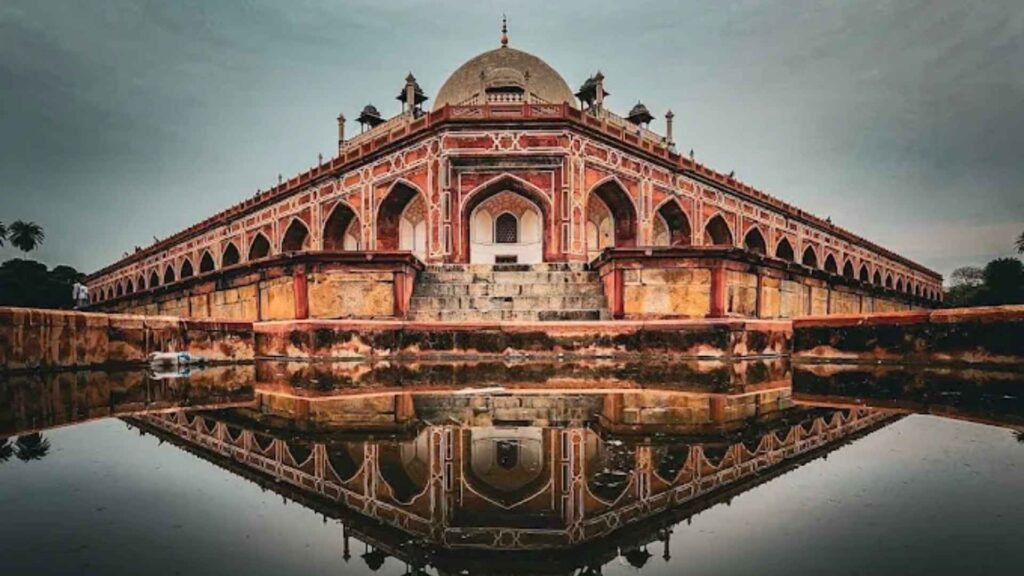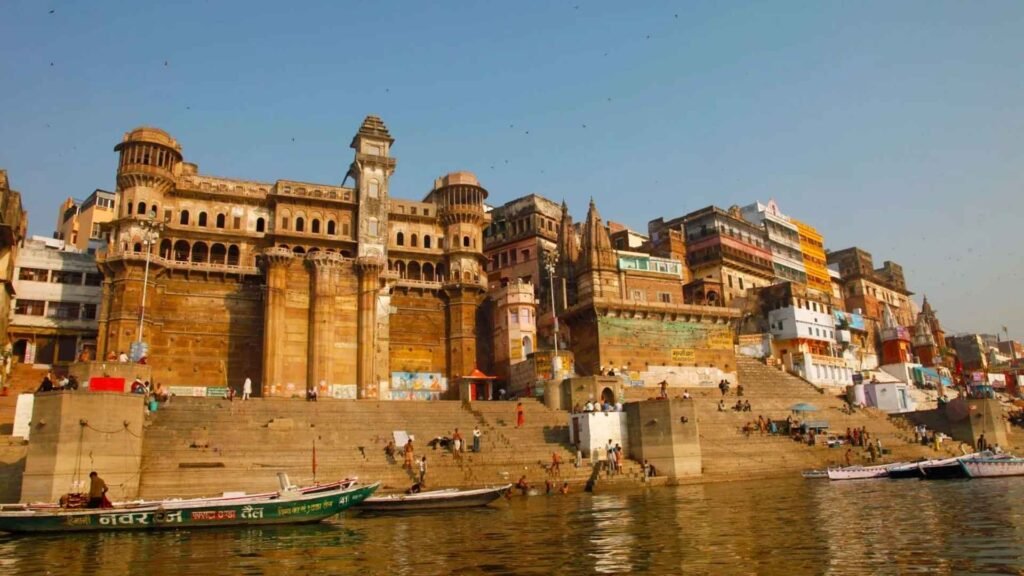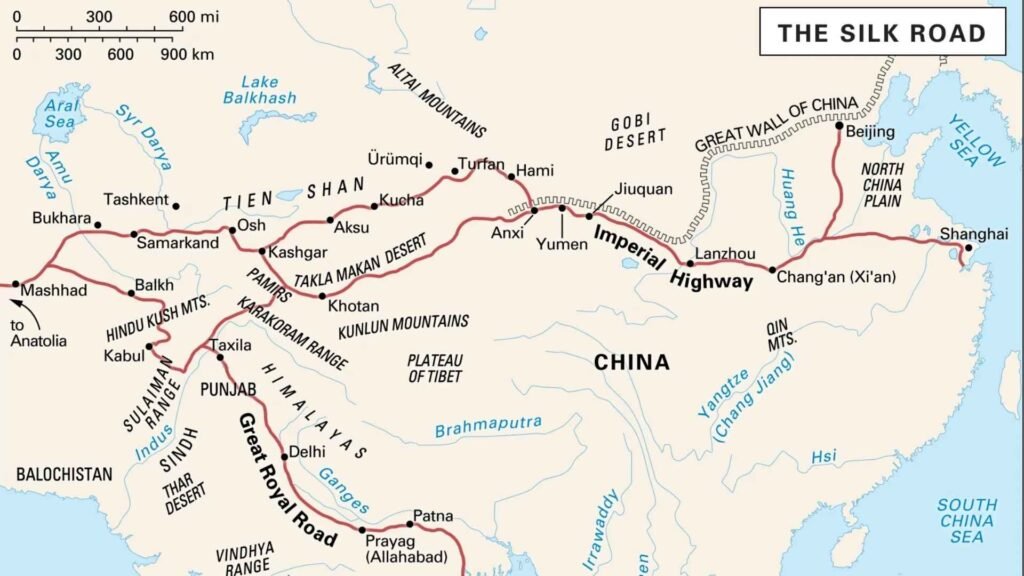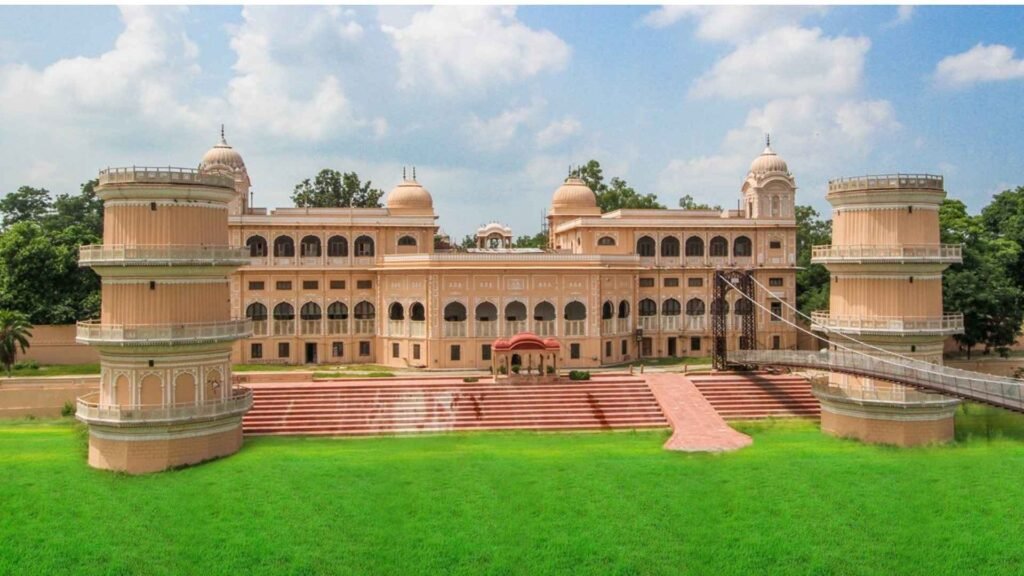Top 10 Places to Visit in North India for History Lovers
North India is a treasure chest packed with history and culture. From ancient ruins to grand forts, this region tells captivating stories of India’s past under various empires. It’s a paradise for history lovers eager to explore the rich heritage through historical places in India. Exploring the places to visit in North India allows you to walk through centuries of diverse cultures, stunning architecture, and significant events that shaped modern India.
Whether you are fascinated by Mughal monuments, medieval forts, or sacred religious sites, North India offers endless opportunities to connect deeply with India’s vibrant history and timeless traditions. visit this official website.
Why North India is a Treasure Trove for History Lovers
North India is a treasure trove for history lovers, offering a vibrant tapestry of ancient civilizations, majestic empires, and architectural wonders. From the Mughal marvels of Agra and Delhi to the Rajput forts of Rajasthan, every corner tells a unique story. Cities like Varanasi and Amritsar bring spiritual depth with centuries-old traditions, while Khajuraho and Sanchi reveal India’s artistic and religious evolution. The region’s rich cultural heritage, reflected in grand palaces, historic temples, and timeless cities, provides history enthusiasts with a chance to walk through the past. North India is where history breathes through stone, scripture, and spiritual legacies.
Read this article on Top 10 Hidden Gems in Asia Every Traveler Must Visit in 2025
Top 10 Places to Visit in North India for History Lovers
North India is a treasure trove for history lovers, offering timeless tales carved in stone and echoed through ancient forts and palaces. Top sites include the Taj Mahal, Qutub Minar, Red Fort, Fatehpur Sikri, Jaipur’s Amer Fort, Varanasi, Khajuraho Temples, Jantar Mantar, Ranikhet, and Ropar. Each destination beautifully unfolds a chapter of India’s rich heritage.
1. Delhi — The Capital of History
Delhi is a city layered with history from different eras. It’s packed with monuments that tell stories of powerful rulers and major events. Exploring Delhi lets you walk through the past.

Key Historical Landmarks
- Red Fort: Built by Mughal Emperor Shah Jahan, it symbolizes Mughal strength and India’s independence struggle.
- Qutub Minar: Standing tall at 73 meters, this minaret roots back to the Delhi Sultanate and is covered with intricate inscriptions.
- Humayun’s Tomb: A precursor to the Taj Mahal, it shows the elegance of Mughal architecture.
Cultural and Historical Significance
Delhi has been a seat of power for centuries. Each dynasty adds a new layer to its identity. The city’s historical sites are well-preserved, with many government efforts to protect these treasures.
2. Agra — Home of the Taj Mahal
Agra shines as a centerpiece of India’s medieval history, home to the iconic Taj Mahal and grand forts—a must-visit destination for history lovers exploring North India’s rich heritage.
Iconic Monuments
- Taj Mahal: The symbol of eternal love, this mausoleum is one of the world’s greatest architectural marvels.
- Agra Fort: An imposing red sandstone fortress overlooking the Yamuna River, it hosted many Mughal emperors.
- Fatehpur Sikri: This UNESCO site was once Akbar’s capital, famous for its blend of Islamic and Hindu architecture.
Historical Insights
Mughals dominated much of North India, leaving behind stunning buildings and vibrant culture. Planning your visit? Arrive early to beat the crowds and spend time understanding Mughal influence on architecture and lifestyle.
Read this Article: Top 10 Cheap Countries to Visit from India in 2025
3. Jaipur — The Pink City of Rajasthan
This city beautifully blends royal history with vibrant culture, where majestic forts and palaces tell tales of brave Rajput warriors and wise rulers who shaped its glorious past.
Heritage Forts and Palaces
- Amber Fort: Built on a hilltop, it combines Hindu and Mughal styles, offering stunning views.
- City Palace: Located in the heart of Jaipur, it showcases royal Rajasthani architecture.
- Jantar Mantar: An ancient astronomical observatory, it’s a UNESCO World Heritage site.
Artistic Legacy
Rajasthan’s craftsmanship reflects its royal past. Visitors can see fine jewelry, textiles, and arts rooted in history. Guided heritage tours are a great way to learn more about each site.
4. Varanasi — Ancient City on the Ganges
Varanasi, one of India’s oldest cities, pulses with spiritual energy and rich history. Situated on the sacred Ganges, it offers a profound cultural journey through ancient rituals, temples, and timeless traditions.

Religious and Historical Significance
- Ghats of Varanasi: These steps along the river have been used for spiritual rituals for centuries.
- Kashi Vishwanath Temple: One of the holiest Hindu temples, it attracts pilgrims from all over.
- Sarnath: The place where Buddha delivered his first sermon, it links religious history with ancient architecture.
Cultural Heritage
This city is full of stories. Walk the ghats at sunrise or join a spiritual ceremony. Best times to visit are during festivals like Diwali or Dev Deepavali for a full cultural immersion.
5. Amritsar — City of Sacred History
Amritsar’s rich history blends India’s freedom struggle with deep spiritual roots, centered around the Golden Temple—a symbol of peace, resilience, and Sikh heritage attracting millions of pilgrims annually.
Key Historical Sites
- Golden Temple: The holiest Sikh shrine, it symbolizes spiritual peace and resilience.
- Jallianwala Bagh: Site of the 1919 massacre, it’s a powerful reminder of India’s fight for independence.
- Partition Museum: Documents the pain and strength of millions during Partition.
Contemporary Heritage
Visit with respect for the religious traditions. Learning about the freedom struggle adds deep meaning to your trip.
6. Madhya Pradesh — The Heart of Incredible India’s Heritage
Madhya Pradesh, known as the “Heart of India,” is rich in history, culture, and natural beauty. It boasts magnificent forts, ancient temples, and wildlife reserves, making it a must-visit destination for travelers seeking diverse experiences.
Famous Historical Sites
- Khajuraho Group of Monuments: UNESCO World Heritage Site famous for its exquisite temples and intricate sculptures.
- Sanchi Stupa: An ancient Buddhist complex with stunning stupas and carvings dating back to the 3rd century BCE.
- Gwalior Fort: A majestic hilltop fort known for its architecture and historical significance.
Cultural and Historical Significance
Madhya Pradesh reflects the diverse traditions of India through its temples, forts, and monuments. The state’s heritage showcases Hindu, Buddhist, and Jain influences, preserving centuries of art and history for future generations.
7. Leh-Ladakh — Crossroads of Ancient Trade Routes
Leh and Ladakh, once vital trade links between China, Tibet, and India, now captivate travelers with their stark landscapes, Buddhist monasteries, and high-altitude adventure nestled in the Himalayas.

Historical Significance
- Silk Route: This region was a key point for merchants and pilgrims.
- Old Monasteries and Forts: Reflect a unique blend of Buddhist culture and history.
Unique Heritage
This high-altitude area offers a glimpse into ancient trade. Exploring monasteries like Thiksey or Hemis adds to your understanding of Buddhist history. Be prepared for challenging terrains and high altitudes.
8. Lucknow — The City of Nawabs
Lucknow, the City of Nawabs, charms visitors with its regal architecture, flavorful Awadhi cuisine, and rich cultural heritage—blending history, hospitality, and elegance in every lane and landmark.
Historical Monuments
- Bara Imambara: A grand Mughal-era complex with a mysterious central hall.
- Chota Imambara: A stunning religious site with elaborate decoration.
- Rumi Darwaza: The iconic gateway symbolizes Mughal architecture.
Cultural Traditions
Lucknow’s history is also in its food, music, and craftwork. Heritage walks are the best way to uncover stories behind its royal past.
9. Rishikesh and Haridwar — Spiritual and Historical Havens
Rishikesh and Haridwar, nestled along the Ganges, are timeless spiritual havens. Known for yoga, rituals, and centuries-old temples, they draw pilgrims and seekers to experience peace, devotion, and divine energy in India’s sacred heartland.
Religious Sites with Historical Roots
- Laxman Jhula and Bharat Mandir in Rishikesh.
- Har Ki Pauri and Mansa Devi Temple in Haridwar.
- These towns have been spiritual centers for centuries, with many stories connected to Hindu mythology.
Spiritual Heritage
Attend festivals or meditation retreats to experience their deep spiritual history. Best visits are during Kumbh Mela or Ganga Aarti sessions.
10. Patiala — Royal Heritage of Punjab
Patiala, the royal heart of Punjab, enchants with majestic palaces, vibrant culture, and timeless traditions—offering a glimpse into the grandeur of its regal heritage and rich Sikh legacy.

Architectural Marvels
- Qila Mubarak: A fortress complex with museums and lush gardens.
- Sheesh Mahal: Known for its mirror work, it’s a stunning example of Mughal influence.
- Baradari: Beautiful pavilions built for royal gatherings.
Cultural Significance
It’s a city that keeps alive royal arts, music, and dance. Exploring Patiala’s heritage offers a true taste of Punjab’s regal history.
FAQs:
Q1: What are the best historical places to see in India?
Some of the best historical places in India include the Taj Mahal in Agra, Jaipur’s Amer Fort, Delhi’s Red Fort, Khajuraho temples, and Hampi’s ruins.
Q2: Which city in India has the best history?
Delhi is considered the city with the best history due to its rich blend of Mughal, British, and ancient Indian heritage sites.
Q3: What are the historical places in North India?
North India boasts many historical places such as Agra’s Taj Mahal, Jaipur’s forts, Amritsar’s Golden Temple, and the ancient city of Varanasi.
Q4: Which state is best for tourism in North India?
Rajasthan is often regarded as the best state for tourism in North India, known for its royal palaces, forts, and vibrant culture. Himachal Pradesh and Uttarakhand are popular for nature and spiritual tourism.
Conclusion
North India stands as a timeless witness to India’s grand historical and cultural evolution. From awe-inspiring monuments and ancient cities to spiritual towns and royal palaces, every site offers a glimpse into the nation’s rich legacy.
Exploring this region allows travelers to experience the diversity and depth of India’s past, making it a must-visit for history enthusiasts. Whether you’re walking through the corridors of Mughal forts or standing in silence at sacred ghats, North India leaves a lasting impression.
So, pack your bags and set out to discover the stories, legends, and landmarks that define the heart of historic India.
Read This Article: Top 10 Best Places to Travel in India


